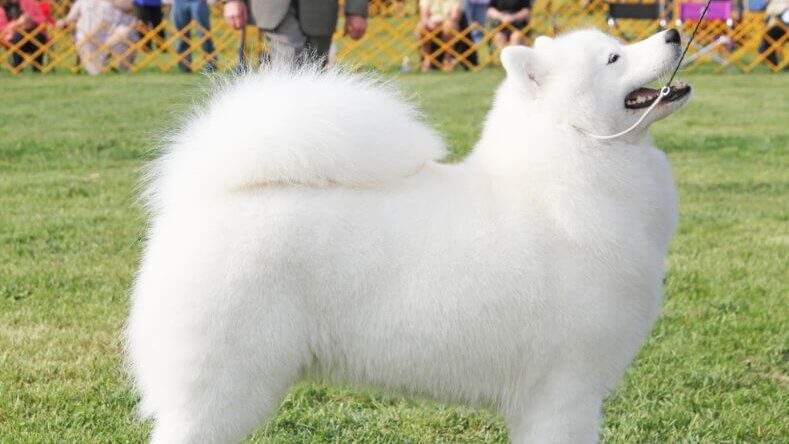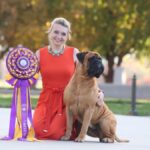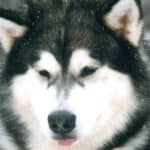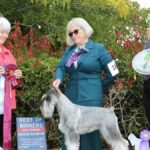Interview with Claire O’Neill, Breeder of Bark Bark Samoyeds
- Please tell us a little bit about yourself. Where do you live? How many years in dogs? How many years as a breeder? What is your kennel name?
- What is your “process” for selecting show puppies? Performance puppies?
- In your opinion, is your breed in good condition overall? Any trends that warrant concern?
- As a Preservation Breeder, can you share your thoughts on the sport today? How’s the judging these days? What do you think about the number of shows?
- In your opinion, is social media good for the sport? Is it harmful?
- What are the biggest challenges facing the dog show community as a whole today and how can these be addressed?
- What are some of the positive changes you’ve seen in the sport over the past decade?
Claire O’Neill
1. Our kennel name is Bark Bark (which can be very fitting for a Samoyed). We live on 2½ acres in Arizona where there is plenty of room for our dogs to play and be dogs. We started in Conformation in 2008 when we purchased our first show dog, Sarge. We took him to the National that year and came home with another male puppy. The next year we purchased two females. We had our first litter of nine puppies in December of 2011. Since then, we have whelped 17 litters. Thirty-four champions have come from our kennel, and between them we have had six Bests in Show, five Reserve Bests in Show, 19 Best in Specialty winners, and two have been Winners Bitch at our National Specialty.
2. Show or performance is evaluated the same way, as you need to keep the Breed Standard in mind. A well-put-together puppy should excel in either sport. We start when the puppies are whelped and still wet, looking at muzzles and heads, leg and tail length, and as they dry you can see what coats may be like. We watch in the next weeks to see which puppies have the drive to get to the milk bar first, and which ones don’t mind being alone. This will be telling in their personalities. Once they get up and moving, you can start to see fronts and rears. We do our evaluations at eight weeks old, and we match our companion puppies with our families’ lifestyles. And whether it is a show dog or a companion dog, our main objective is to place them in loving forever homes.
3. Our breed is in good condition overall, but we are seeing a bit more bad rears, lack of reach and drive, flipping fronts, and straight stifles from class dogs in our area. What is concerning is that this is being awarded. And eventually, some of these dogs will be used for breeding.
4. We are glad to see new judges coming into the sport. We have seen a change in the way some longtime judges are awarding dogs in our breed. Also, in our breed, it is nice to see them getting recognized more often in the Group ring. We remember back in early 2009, our boy Sarge finished his championship on his first birthday and on the last day of shows he won the Group. Other Samoyed breeders/owners were curious to know who the judge was because it wasn’t that common. I compile quarterly wins for our parent club magazine, and Group wins and placements are bountiful now. Just recently, over the Memorial Day weekend, there were 27 Group placements for Samoyeds. And puppies are winning Breed from the classes over specials and placing in or winning the Groups.
We think the number of shows can be detrimental to the sport as it lowers the entries at shows, making it harder to find majors.
5. Social media can be a great thing for the sport when used in a positive way. It is a great way to see dogs that aren’t in your area, see who is winning each week, and connect with others in the sport, whether it is in your breed or not. For us as breeders, it is how we let our puppy buyers follow our litters from birth until they are ready to go home.
Social media has a harmful side, too. There is a group called Judges Report Card that can get very nasty and negative. Even when someone posts a positive post about a judge, you get your fair share of negative posts about the judge, and usually, they don’t even say why.
6. One of the biggest challenges is the rising costs that it takes to put on a successful show. The cost of venues has risen. The number of shows so close together causes lower entries. It is harder to create a major, which cuts down on the entries. In turn, clubs have had to charge more for entries, and at some venues the cost of parking is very high.
7. The Owner-Handled Levels of Achievement is one of the more positive additions. Also, the AKC Puppy of Achievement and the 4–6-Month Beginner Puppy Class, which is a wonderful way to get a puppy accustomed to being around people and dogs, and getting them used to the travel and to learn about the ring.








